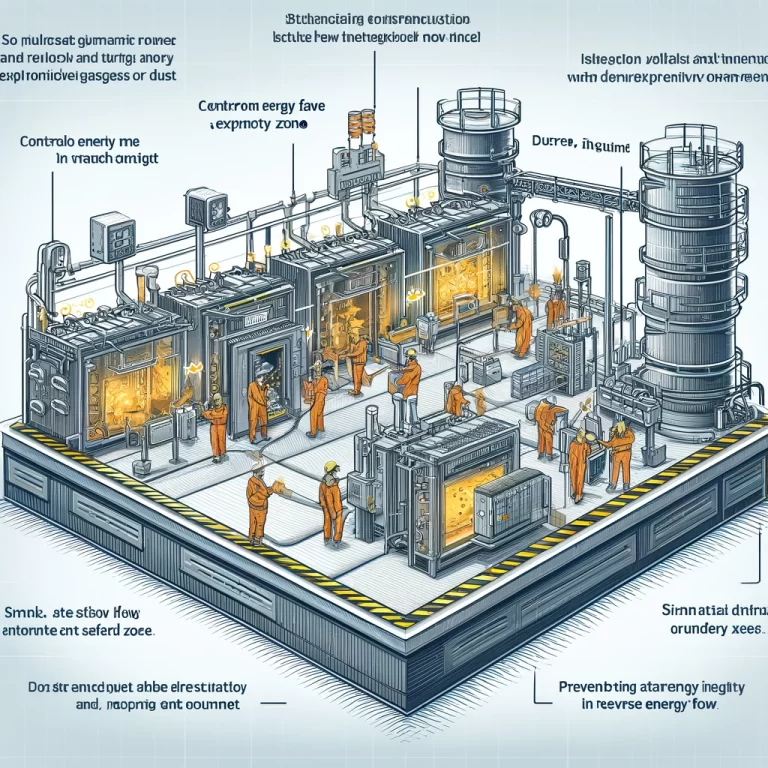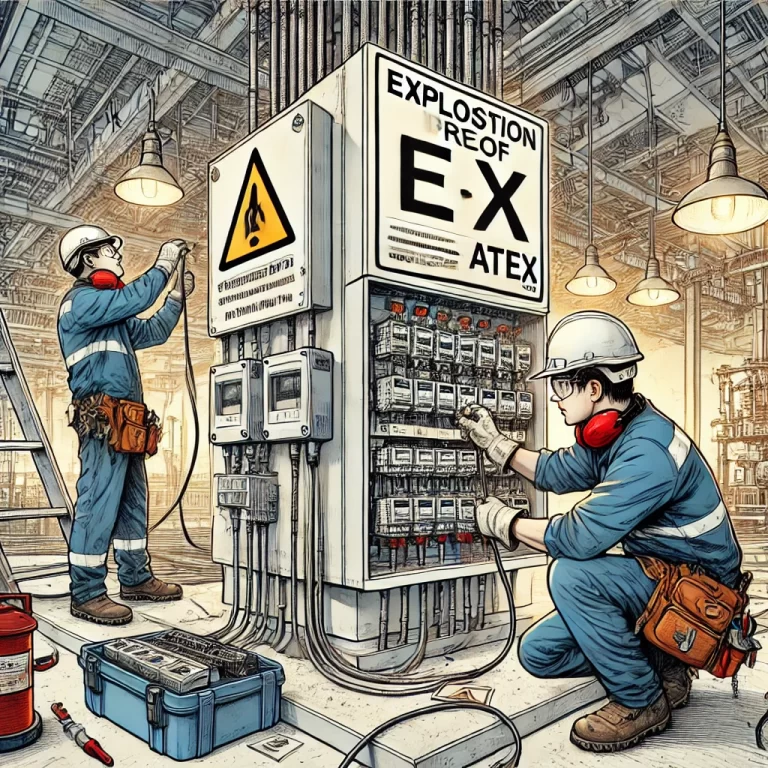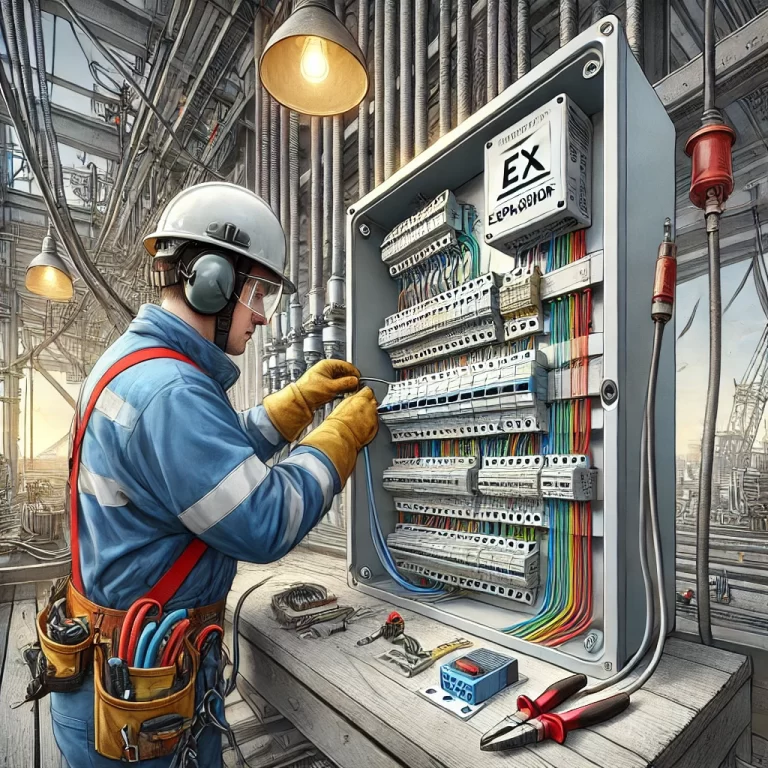Explosion-proof electrical equipment, such as explosion-proof distribution boxes, is specifically designed for hazardous environments where flammable gases, vapors, or dust may be present. Proper installation, wiring, and usage are critical to ensuring the safety and functionality of these systems. Below, we will discuss the correct wiring methods for an explosion-proof distribution box and highlight key usage precautions.

1. Wiring an Explosion-Proof Distribution Box
When installing and wiring an explosion-proof distribution box, it is essential to follow strict safety protocols and national electrical standards (e.g., IEC, NEC, or local safety regulations). Below are the general steps for wiring an explosion-proof distribution box:
Step 1: Safety Precautions and Power Shutdown
Before beginning any installation or wiring, ensure that the electrical power supply is turned off to avoid accidental electrocution or electrical hazards. This can typically be done by isolating the circuit at the main power supply or circuit breaker.
Step 2: Select the Correct Cable and Components
Ensure that all cables, connectors, and components used are suitable for explosion-proof applications. The cables must be rated for use in hazardous areas (typically certified with EX or ATEX markings). Choose cables that are resistant to flame, impact, and mechanical damage. Explosion-proof distribution boxes often require special cables designed to prevent sparks or electric arcs from escaping the box.
Step 3: Wiring to the Terminal Blocks
Explosion-proof distribution boxes come with terminal blocks for connecting power cables. Begin by connecting the incoming power supply cables (usually from the main circuit) to the terminal block marked for the “incoming power” or “live” terminal. Ensure that the neutral, live, and earth wires are all correctly connected to their respective terminals. A multimeter or continuity tester can be used to verify that the wiring is correct.
Step 4: Proper Grounding and Earth Connection
It is essential to properly ground the distribution box. A dedicated earth terminal must be used to ensure any stray currents or faults are directed safely to the ground. Ensure that the earth conductor is securely connected to prevent electrical shocks or potential fire risks in case of faults.
Step 5: Secure Connections
After connecting all the cables, it is crucial to ensure that the terminals are properly tightened. Loose connections can lead to overheating, electrical arcing, or sparking, which could potentially ignite nearby flammable gases or dust. Use a torque wrench to tighten terminal screws to the recommended specification.
Step 6: Final Inspection and Testing
Once all the wiring is complete, conduct a thorough inspection to check for any errors, such as loose connections, exposed wires, or incorrect grounding. A qualified electrician should perform a final test to ensure all connections are correct and that there are no potential short circuits or ground faults. A voltage tester can be used to verify the integrity of the electrical connections.

2. Usage Precautions for Explosion-Proof Distribution Boxes
Proper installation and regular maintenance are essential to maintaining the safety and longevity of an explosion-proof distribution box. The following usage precautions must be adhered to in order to avoid risks:
1. Correct Explosion-Proof Rating
Explosion-proof distribution boxes are categorized by different levels of protection (e.g., Zone 1, Zone 2, or Zone 21, Zone 22, depending on whether the area is classified as gas or dust hazardous). Always ensure that the explosion-proof rating of the box matches the specific hazardous area where it will be installed. Installing a box with an inadequate explosion-proof rating can lead to catastrophic failure in the event of an explosion.
2. No Unauthorized Modifications
Explosion-proof distribution boxes are designed to meet strict safety standards, and unauthorized modifications can compromise their functionality. Do not alter or modify the internal components, wiring, or sealing mechanisms of the box. Even small changes, like drilling holes for extra connections or installing non-certified parts, can invalidate explosion-proof certifications and pose safety risks.
3. Use Only Approved Cables and Wiring
Always use explosion-proof certified cables and wiring that are compatible with the distribution box. Low-quality or non-certified cables may not provide the necessary protection against potential sparks or fire. Furthermore, ensure cables are properly insulated and secured to prevent accidental damage, especially in environments where machinery or equipment could be subject to physical impact.
4. Avoid Overloading the System
Explosion-proof distribution boxes are rated for specific electrical loads. Exceeding the rated capacity can lead to overheating and pose a fire or explosion risk. Always ensure that the box is not subjected to excessive electrical currents. If additional capacity is needed, consider upgrading to a higher-rated distribution box.
5. Keep the Environment Dry and Clean
Although explosion-proof distribution boxes are sealed to prevent the ingress of dust and moisture, regular maintenance and inspection are essential. Ensure that the box is kept dry and free from corrosive substances. If the environment is particularly humid or dusty, regular checks should be made to confirm that the seals and gaskets are intact and not degraded. Replace damaged seals immediately to maintain explosion-proof integrity.
6. Periodic Maintenance and Inspection
Explosion-proof distribution boxes require regular inspections to ensure they are functioning correctly. This includes checking for any signs of damage, wear, or corrosion. Any malfunctioning or damaged components must be repaired or replaced promptly by qualified personnel. Additionally, it is crucial to check the tightening of terminals, as loose connections can lead to overheating or sparking.
7. Avoid Using Corrosive Cleaning Agents
When cleaning the exterior of an explosion-proof distribution box, use non-corrosive and non-flammable materials. Harsh chemicals can damage the box’s protective coating, which can lead to the degradation of its explosion-proof capabilities. A simple damp cloth with mild detergent is generally sufficient to clean the outer surface.

Conclusion
Wiring and maintaining an explosion-proof distribution box require careful attention to detail and adherence to safety protocols. Proper installation, the use of correct materials, and routine maintenance are all essential to prevent accidents and ensure safe operation in hazardous environments. By following the correct procedures and using the right equipment, you can significantly reduce the risk of electrical accidents, fire, or explosions in areas where safety is paramount.
